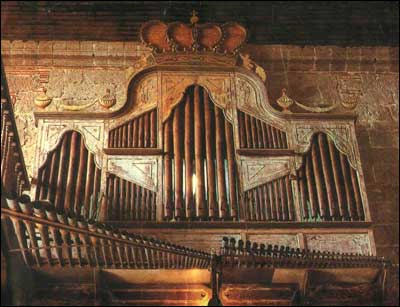
In the West, in the form of Gregorian chant, the inherited tradition of psalm-singing was developed to a new sublimity and purity, which set a permanent standard for sacred music, music for the liturgy of the Church. Polyphony developed in the late Middle Ages, and then instruments came back into divine worship—quite rightly, too, because, as we have seen, the Church not only continues the synagogue, but also takes up, in the light of Christ’s Pasch, the reality represented by the Temple. Two new factors are thus at work in Church music. Artistic freedom increasingly asserts its rights, even in the liturgy. Church music and secular music are now each influenced by the other. This is particularly clear in the case of the so-called “parody Masses”, in which the text of the Mass was set to a theme or melody that came from secular music, with the result that anyone hearing it might think he was listening to the latest “hit”. It is clear that these opportunities for artistic creativity and the adoption of secular tunes brought danger with them. Music was no longer developing out of prayer, but, with the new demand for artistic autonomy, was now heading away from the liturgy; it was becoming an end in itself, opening the door to new, very different. ways of feeling and of experiencing the world. Music was alienating the liturgy from its true nature. At this point the Council of Trent intervened in the culture war that had broken out. It was made a norm that liturgical music should be at the service of the Word; the use of instruments was substantially reduced; and the difference between secular and sacred music was clearly affirmed. [The Spirit of the Liturgy (SF, CA: Ignatius, 2000), pp. 146-47]
2+(2).jpg)
.jpg)










.jpg)



No comments:
Post a Comment